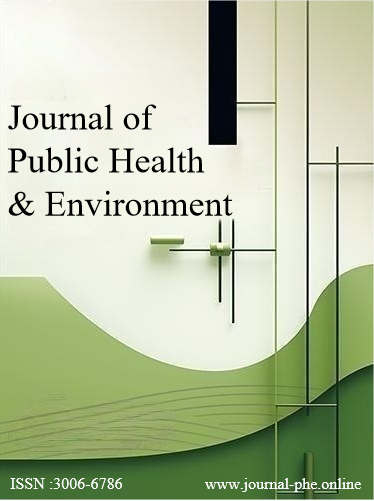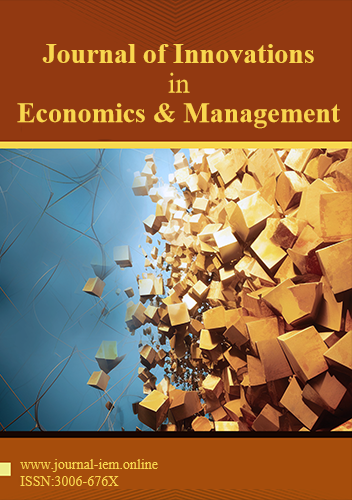 An open access journal
An open access journal
The impact of MRSA on macrophage infiltration and polarization in mouse lung tissues
Abstract
Objective: To establish a model of methicillin-resistant Staphylococcus aureus(MRSA) pneumonia and observe the effect of MRSA on macrophage polarization. Methods: The MRSA pneumonia model is established by adding 1×108CFU/mL MRSA bacterial solution to BALB/c mice through nasal drip. To make pathological specimens of lung tissue and observe the inflammation of the lungs;to detect the expression of F4/80, CD11B, CD206, and CD86 in mouse lung tissue through flow cytometry to reflect the polarization of macrophages and their M1/M2.
Result: Compared with the uninfected group, macrophages have increased significantly in infected group; The expression of CD206 in macrophages has significantly enhanced after infection, indicating the macrophage polarization towards M2;
Conclusion: MRSA pulmonary infection leads to a significant infiltration of macrophages in lung tissue and their polarization towards the M2 phenotype.
Share and Cite
Article Metrics
References
- Cheung G Y C, Bae J S, Otto M. Pathogenicity and virulence of Staphylococcus aureus[J]. Virulence, 2021, 12(1): 547-569.
- Peacock S J, Paterson G K. Mechanisms of methicillin resistance in Staphylococcus aureus[J]. Annual review of biochemistry, 2015, 84: 577-601.
- Wielders C L C, Fluit A C, Brisse S, et al. mecA gene is widely disseminated in Staphylococcus aureus population[J]. Journal of clinical microbiology, 2002, 40(11): 3970-3975.
- Bassetti M, Labate L, Melchio M, et al. Current pharmacotherapy for methicillin-resistant Staphylococcus aureus (MRSA) pneumonia[J]. Expert opinion on pharmacotherapy, 2022, 23(3): 361-375.
- Cong Y, Yang S, Rao X. Vancomycin resistant Staphylococcus aureus infections: A review of case updating and clinical features[J]. Journal of advanced research, 2020, 21: 169-176.
- Italiani P, Boraschi D. From monocytes to M1/M2 macrophages: phenotypical vs. functional differentiation[J]. Frontiers in immunology, 2014, 5: 514.
- Jablonski K A, Amici S A, Webb L M, et al. Novel markers to delineate murine M1 and M2 macrophages[J]. PloS one, 2015, 10(12): e0145342.
- Ryszer T. Understanding the Mysterious M2 Macrophage through Activation Markers and Effector Mechanisms[J]. 2015.
- Ogihara S,Saito R,Sawabe E,et al. Molecular typing of methicillin-resistant Staphylococcus aureus:Comparison of PCR-based open reading frame typing,multilocus sequence typing,and staphylococcus protein a gene typing[J]. J Infect Chemother,2018,24(4):312-314.
- Boyle-Vavra S, Daum R S. Molecular strategies of Staphylococcus aureus for resisting antibiotics[J]. Staphylococcus Genet. Physiol, 2016: 249-300.
- Flannagan R S, Heit B, Heinrichs D E. Antimicrobial mechanisms of macrophages and the immune evasion strategies of Staphylococcus aureus[J]. Pathogens, 2015, 4(4): 826-868.
- Xavier M N, Winter M G, Spees A M, et al. PPARγ-mediated increase in glucose availability sustains chronic Brucella abortus infection in alternatively activated macrophages[J]. Cell host & microbe, 2013, 14(2): 159-170.
- XU Y, NIU W, JING Y, et al. Chlamydia muridarum respiratory infection induces macrophage infiltration and polarization toward M1 phenotype[J]. Chinese Journal of Microbiology and Immunology, 2022: 194-201.
- Wang Y C, Ma H D, Yin X Y, et al. Forkhead box O1 regulates macrophage polarization following Staphylococcus aureus infection: experimental murine data and review of the literature[J]. Clinical reviews in allergy & immunology, 2016, 51(3): 353-369.
- Huang Z, Luo Q, Guo Y, et al. Mycobacterium tuberculosis-induced polarization of human macrophage orchestrates the formation and development of tuberculous granulomas in vitro[J]. PloS one, 2015, 10(6): e0129744.





